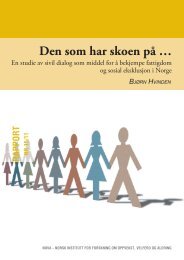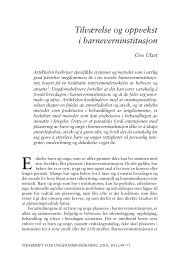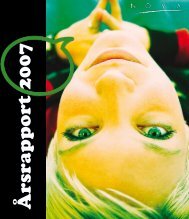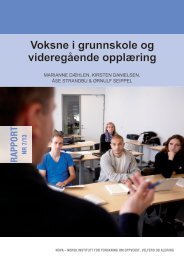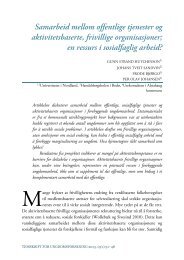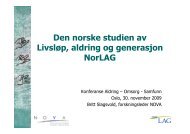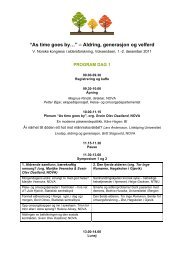Parents' socioeconomic status and children's academic ... - Nova
Parents' socioeconomic status and children's academic ... - Nova
Parents' socioeconomic status and children's academic ... - Nova
Create successful ePaper yourself
Turn your PDF publications into a flip-book with our unique Google optimized e-Paper software.
4 Parental characteristics <strong>and</strong> school<br />
outcomes: some empirical evidence<br />
This chapter shows how school results correlate with parental characteristics.<br />
It comprises two main parts, one based on bivariate <strong>and</strong> the other on<br />
multivariate analysis. The first part has four sections, the first of which<br />
provides descriptive statistics of the pupils <strong>and</strong> their performance. The<br />
remaining sections focus on the association between children’s <strong>academic</strong><br />
performance <strong>and</strong> parental <strong>socioeconomic</strong> <strong>status</strong>: the second section is on<br />
parents’ education, the third on employment <strong>and</strong> the fourth on cultural<br />
background.<br />
4.1 Descriptive statistics of children’s <strong>academic</strong><br />
achievement<br />
Education policies in Norway promote equal access for all members of the<br />
community. Every child has the right to at least 13 years of free education<br />
before deciding to enter the labour market or continue to higher education.<br />
The first ten years of education are compulsory, <strong>and</strong> consist of primary (years<br />
one to seven) <strong>and</strong> lower secondary (years eight to ten), while the next three<br />
years (upper secondary) are optional (for more information, see the website of<br />
The Norwegian Ministry of Education <strong>and</strong> Research (Ministry of Education<br />
<strong>and</strong> Research 2009). The sample used in this paper consists of 499 pupils<br />
undergoing lower secondary education. Of them, 388 are drawn from a<br />
population of children in families with an income below 60 per cent of the<br />
median income in 2000 (from now on the case sample) <strong>and</strong> 111 from a<br />
general child population (from now on the control group). They are aged<br />
from 13 to 15 years, <strong>and</strong> 35.5 per cent (177) of them are in their eighth year,<br />
32.9 (164) in their ninth year <strong>and</strong> 31.7 per cent (158) in their tenth year of<br />
schooling.<br />
Academic achievement at school year eight <strong>and</strong> above is evaluated by<br />
grades, ranging from six as the highest to one as the lowest. Our focus is on<br />
– Parents’ <strong>socioeconomic</strong> <strong>status</strong> <strong>and</strong> children’s <strong>academic</strong> performance – 23




